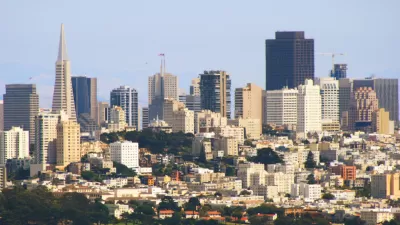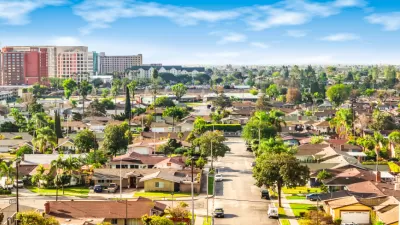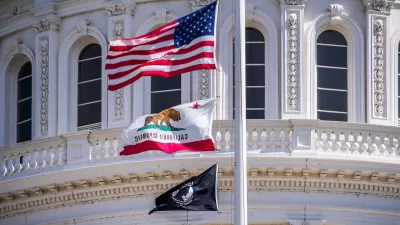To meet state-mandated housing goals, San Francisco plans to accommodate thousands of new housing units focused in the city’s west side, which has seen little growth for decades.

In an update to its housing element, San Francisco plans to allow for 34,000 additional housing units via rezoning. As J.K. Dineen writes in the San Francisco Chronicle, “The 34,000 units of ‘added capacity’ will be focused in ‘high-resource’ commercial corridors of the city — much of it in the Sunset and Richmond districts — that have not seen much development in recent decades.”
Per California’s Regional Housing Needs Assessment (RHNA), the city needs to create 82,000 housing units by 2031. “In addition, the element must create a blueprint for ‘fair housing,’ which means that a significant amount of the new residential development must occur in ‘well-resourced’ neighborhoods where discrimination and zoning rules have historically combined to keep out newcomers — especially people of color — and new buildings.” Sometimes viewed as a toothless exercise, the RHNA came into focus this year when the state rejected housing element updates from many cities, citing unrealistic projections or insufficient efforts to meet housing demand and provide for affordable, inclusive housing.
San Francisco’s new housing element acknowledges the challenges to adding new housing in the city. “In addition to increasing the amount of housing planned for rezoned neighborhoods, the new housing element draft added analysis on the factors that slow down housing production, such as the city’s politically-charged discretionary review process.” For example, the city will consider eliminating conditional use permitting for replacing single-family homes with multi-unit buildings.
FULL STORY: S.F. plans to rezone the city to allow the production of 34,000 new homes — many on the westside

Planetizen Federal Action Tracker
A weekly monitor of how Trump’s orders and actions are impacting planners and planning in America.

Congressman Proposes Bill to Rename DC Metro “Trump Train”
The Make Autorail Great Again Act would withhold federal funding to the system until the Washington Metropolitan Area Transit Authority (WMATA), rebrands as the Washington Metropolitan Authority for Greater Access (WMAGA).

The Simple Legislative Tool Transforming Vacant Downtowns
In California, Michigan and Georgia, an easy win is bringing dollars — and delight — back to city centers.

The States Losing Rural Delivery Rooms at an Alarming Pace
In some states, as few as 9% of rural hospitals still deliver babies. As a result, rising pre-term births, no adequate pre-term care and "harrowing" close calls are a growing reality.

The Small South Asian Republic Going all in on EVs
Thanks to one simple policy change less than five years ago, 65% of new cars in this Himalayan country are now electric.

DC Backpedals on Bike Lane Protection, Swaps Barriers for Paint
Citing aesthetic concerns, the city is removing the concrete barriers and flexposts that once separated Arizona Avenue cyclists from motor vehicles.
Urban Design for Planners 1: Software Tools
This six-course series explores essential urban design concepts using open source software and equips planners with the tools they need to participate fully in the urban design process.
Planning for Universal Design
Learn the tools for implementing Universal Design in planning regulations.
Smith Gee Studio
City of Charlotte
City of Camden Redevelopment Agency
City of Astoria
Transportation Research & Education Center (TREC) at Portland State University
US High Speed Rail Association
City of Camden Redevelopment Agency
Municipality of Princeton (NJ)





























